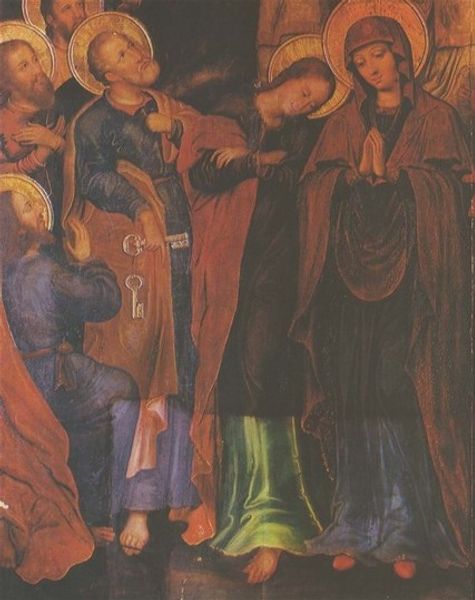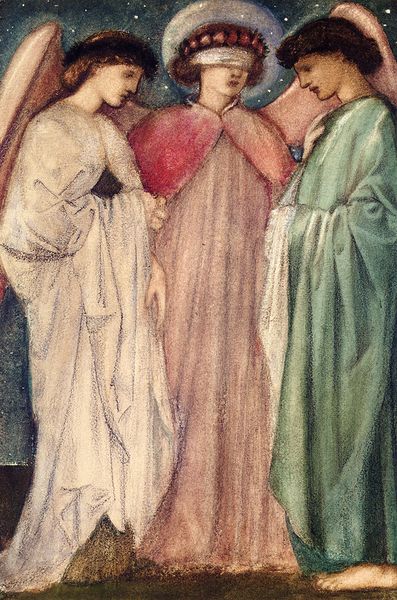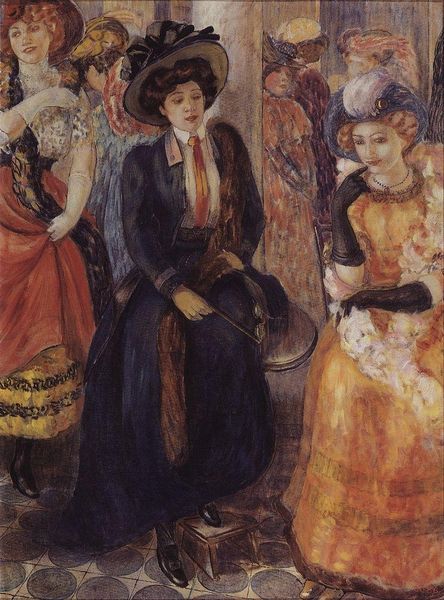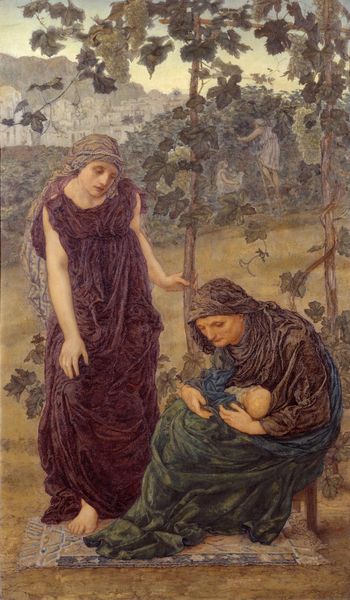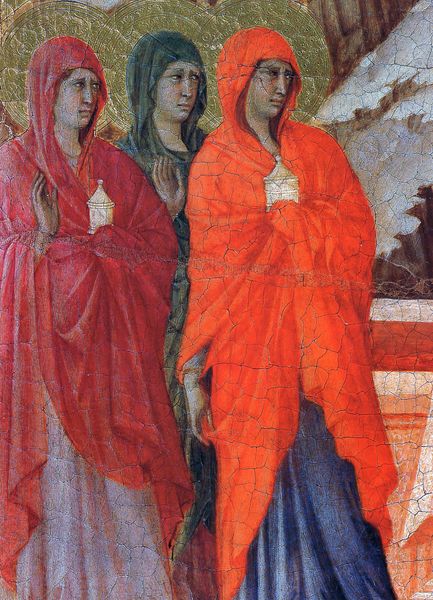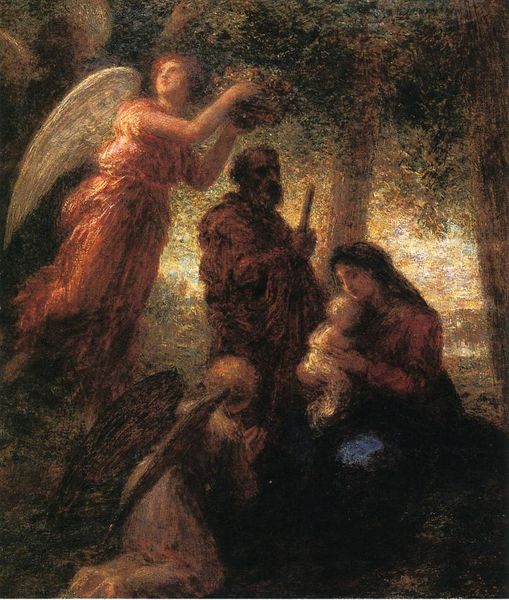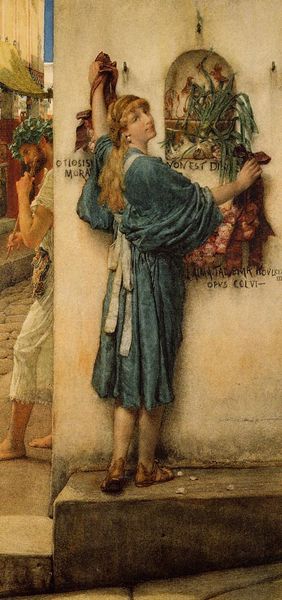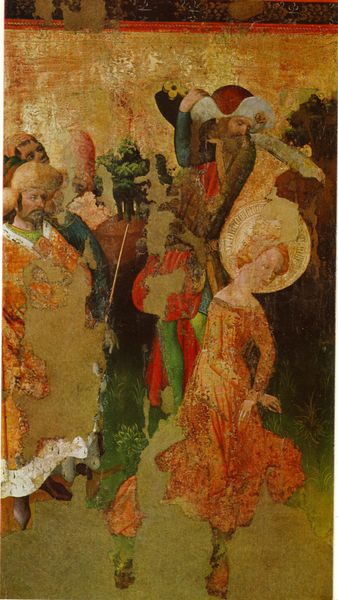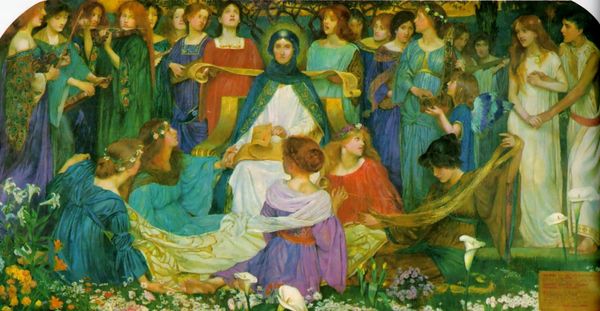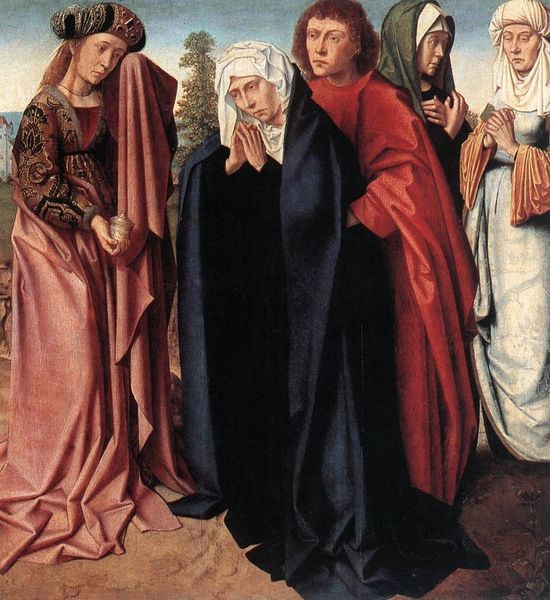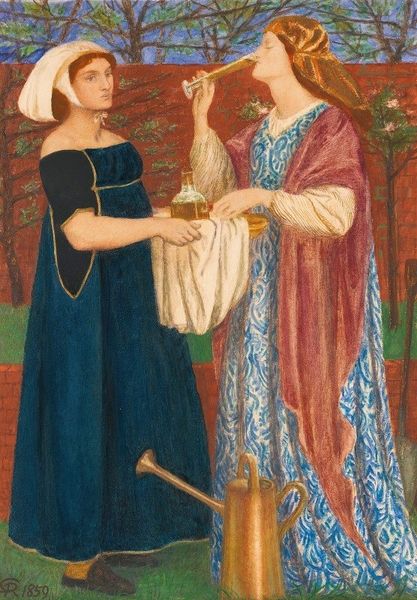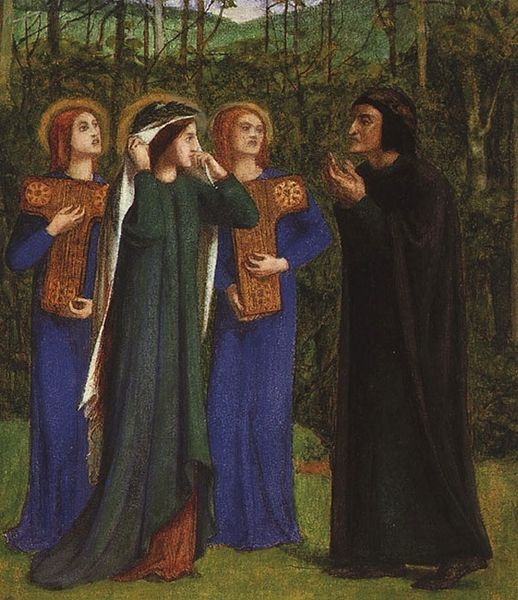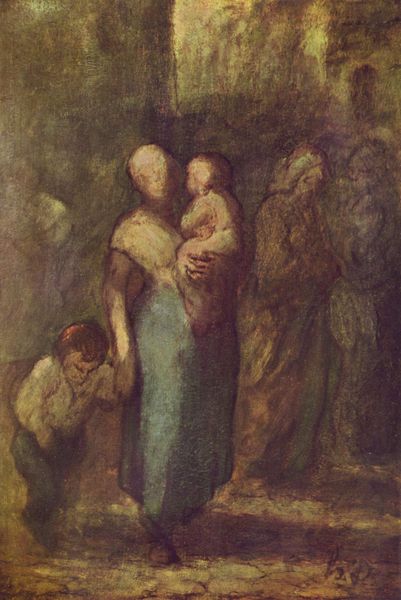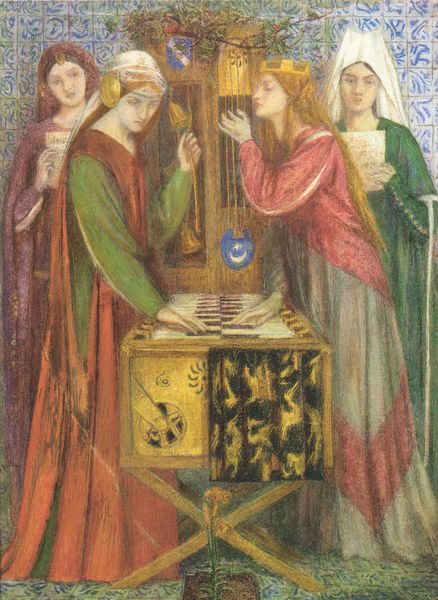
Dimensions: 39.37 x 29.21 cm
Copyright: Public domain
Curator: Rossetti's "The First Madness of Ophelia," painted in 1864, gives us a glimpse of Shakespeare’s tragic character before her final descent. Currently, it resides here at the Oldham Gallery in the UK. It’s a captivating scene, don’t you think? Editor: Absolutely, a real melancholic hum resonates from it. The faces are shadowed, secretive almost, though Ophelia herself is illuminated and dreamy-eyed. And that almost claustrophobic, tapestry-like background...it feels oppressive, suggestive of the forces closing in on her. Curator: Exactly. Rossetti, steeped in the Pre-Raphaelite brotherhood's ethos, packed so much symbolic detail into every inch of the canvas. Look at the intensity of color—deep blues, rich reds—and consider Ophelia's embroidered sleeves: such detailed work. But why depict her specifically at her "first" madness? Editor: It feels like Rossetti’s highlighting a pivotal moment of transition and trauma. Ophelia's madness, triggered by her father's death and Hamlet's rejection, becomes symbolic of female vulnerability and societal constraints placed on women. He really brings the drama of how women were treated in his time and, dare I say it, even today. The expectation of conformity… Curator: Yes, and it makes you wonder what Rossetti was feeling in 1864, as he created her madness. The swirling textures evoke that sense of unraveling beautifully, don't they? A slow-motion, flower-crowned catastrophe. It seems as though her innocence and her beauty are at war in this scene, so sad. Editor: I also find the gazes significant: who looks at whom and how. The other figures, seemingly her royal family, appear indifferent. They almost seem to expect the break in her personality that Ophelia suffers through. Are they conspiring, witnessing, or simply disconnected from Ophelia's interior world? Are their eyes clouded in thought? Rossetti seems to want to explore the complexities of grief, societal pressure, and a young woman on the brink. Curator: Such darkness can be seen in those thoughtful royal features surrounding her. It is such a sad piece with some disturbing undertones for Ophelia. Editor: A painting that stays with you, provoking ongoing questions about representation and power.
Comments
No comments
Be the first to comment and join the conversation on the ultimate creative platform.
